Congo Peafowl is a group of birds that are most notable for their extravagant plumage. There are two species of peafowl: the Indian peafowl, and the Congo peafowl.
- Status: Vulnerable
- Known as: Congo Peafowl, Congo Peacock.
- Estimated numbers left in the wild: 15,000 or less.
Congo peafowl is the only species of peafowl found in Africa, and they are considered to be endangered.
Description
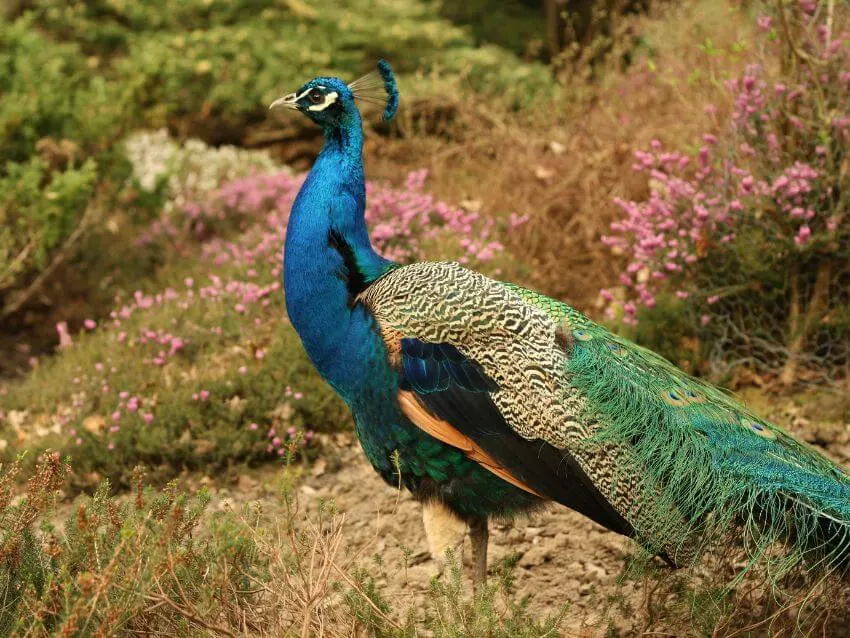
The bird species is a relatively large bird, measuring up to 45 inches in length.
They are colored a deep blue-green, with a long tail that is tipped in black. Males have a spectacular train of feathers that resemble a green and gold fan.
Peafowl is a chestnut-brown bird and a diurnal species, meaning they are active during the day. peafowl is frugivores, meaning they primarily ingest fruit and berries. Congo peacock lives in small groups of two to five individuals that only meet seasonally to mate.
Anatomy and Appearance
The Congo peafowl is a beautiful bird with many traits that distinguish it from the other peafowl.
It is also known for its beautiful and long feathers and crest. The species is similar to other peafowl species like the immature Asian peafowl bust and smaller than its cousin Green Peafowl.
The bird is sexually dimorphic like another peafowl, where the males are all blue and extravagantly plumed with violet tinge while females can be brown, gray, or white.
Congo Peafowl also has a ruff of frosted grayish-white feathers around their neck and a short chestnut brown crest, which is believed to help provide camouflage when nesting in trees and the rainforest floor.
It has been said that the bird “is the earliest known species of the peacock lineage.” The Congo Peacock has an average height of 38-42 inches and weighs between 6-11 pounds.
It is a colorful bird, with males clad in dark blue feathers that glisten with a metallic sheen of violet and green. The female is a chestnut color with a metallic greenback. The female’s length is 60 to 63 centimeters, while the male’s is slightly longer at 64 to 70 centimeters.
The courtship display of this large, monogamous bird involves the male fanning his tail to display its colors. The congo peacock’s tail has no eye spots like those found on the Asian species, however.
Location

The Congo peafowl is found only in the Democratic Republic of Congo, mainly in its eastern half. Lowland rainforest in the Central Democratic Republic is the bird’s overall habitat, but it seems to prefer specific areas within the forest – slopes between streams, with an open understory, high canopy, and plenty of litter on the forest floor.
See Related: Most Interesting Birds in the World
Congo Peafowl Habitat
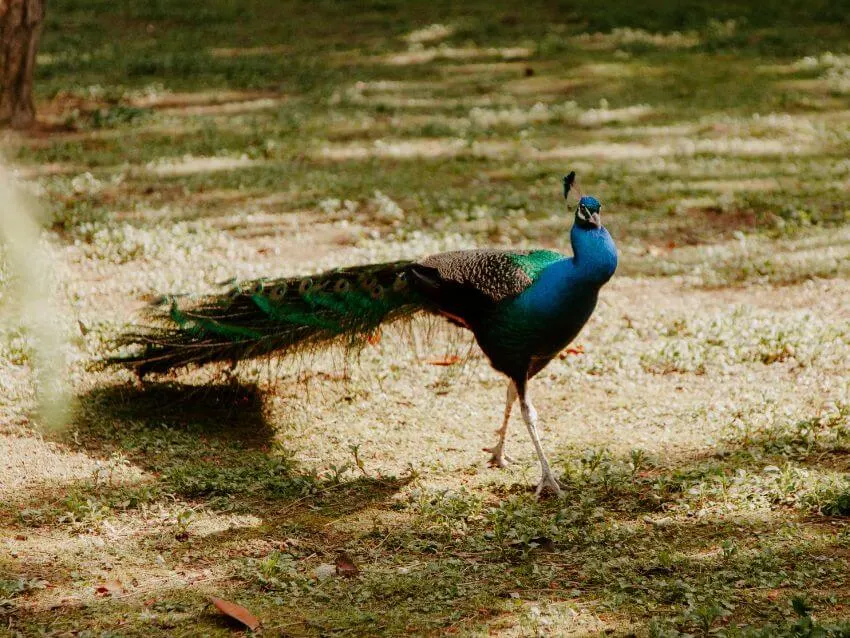
Congo peafowl’s habitat is fragmented throughout Congo, the congo river basin, and lowland rainforests.
Congo is a forested area with forest patches all over the Congo.
Peafowl lives in Congo patches. Congo peafowl uses Congo patches to move from one Congo patch to another Congo patch in the Congo. The size of the Congo patch is variable and often ranges from a few hundred hectares to a few thousand hectares.
The ground in Congo, which is where peafowl lives, is covered in trees, shrubs, grasses, and other plants that touch or cling to the ground. In these areas, there are many different species of animals that live there too.
One of these animals is called a baboon. These baboons eat fruit from the trees and shrubs that peafowl eat. Congo peafowl often interacts with baboons in Congo patches.
Congo peafowl also eats grasshoppers, caterpillars, frogs, lizards, snails, and occasionally seeds and fallen fruit off the ground. The bird stays close to Congo patches so they can find food to eat.
Congo Peafowl Diet and Nutrition
Congo peafowl is mysterious birds similar to Indian peacocks, which made it difficult to study due to their remote location and the fact that they are scattered widely in their habitat.
The birds appear to be omnivorous, eating fruits, seeds, and plant parts as well as insects and other small invertebrates.
Newly hatched bird peafowl chicks rely on insects for their initial diet, eating large amounts in their first week of life, presumably for an early spurt of protein for effective growth.
Congo Peafowl Mating Habits
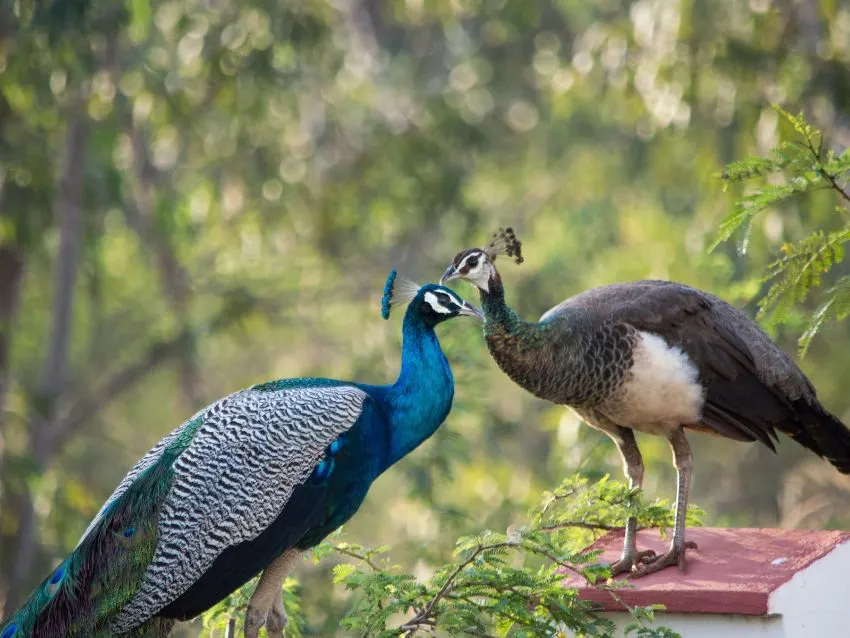
The Congo species of Peafowl is a unique species and monogamous bird that mates for life. The male Congo Peafowl builds a nest in a tall tree and the female Congo Peafowl lays her eggs in the nest.
At age of three the species becomes sexually mature and ready to mate.
The male Congo Peafowl incubates the eggs and looks after the babies until they are able to fly. Peafowl is monogamous, and the male Congo peacock proudly displays his tail feathers while courting and luring females. This is also done as an indication that a potential mate may be found.
A female peafowl reaches sexual maturity in about a year, while males take twice as long to reach their full growth. Their egg clutches are fairly small at two to four eggs per season. In captivity, these birds prefer to lay their eggs on elevated platforms or nest boxes about 1.5 meters above the ground.
Their wild nesting behavior is little known. The female incubates the eggs alone, and these hatch into chicks after 26 days. Male and female Congo peafowl’s most common vocalization is a duet, presumably used for pair bonding and as a location call.
Congo Peafowl vs Other Bird Species
Congo Peafowl is a species of bird that is native to Congo. Peafowl is the only species in the genus Congo and it belongs to the family Phasianidae and order Galliformes.
It differs from other types of birds in the following ways: Congo Peafowl has bright blue feathers with contrasting black wings, They have deep bluish-purple irises, Congo Peafowl have a white pattern on their face.
But Peafowl does not have a fleshy knob at the base of their bill. Congo Peafowl only breeds seasonally and Congo Peafowl also has unique air sacks that change the pitch of their calls.
Peafowl range from Congo to other parts of Africa and Congo is the only place Congo Peafowl can be found. Congo Peafowl has a shorter wing chord than Congo peahen (female).
Congo Peafowl and Human Relationship
Unfortunately, the bird is endangered. Congo Wildlife Conservation project has identified habitat fragmentation, poaching, and civil unrest as major threats to Congo Peafowl populations, mostly coasted by humans.
The humans in Congo have done their best by providing protection for the peafowls in Congo National Park (CNP).
Congo Peafowl Facts
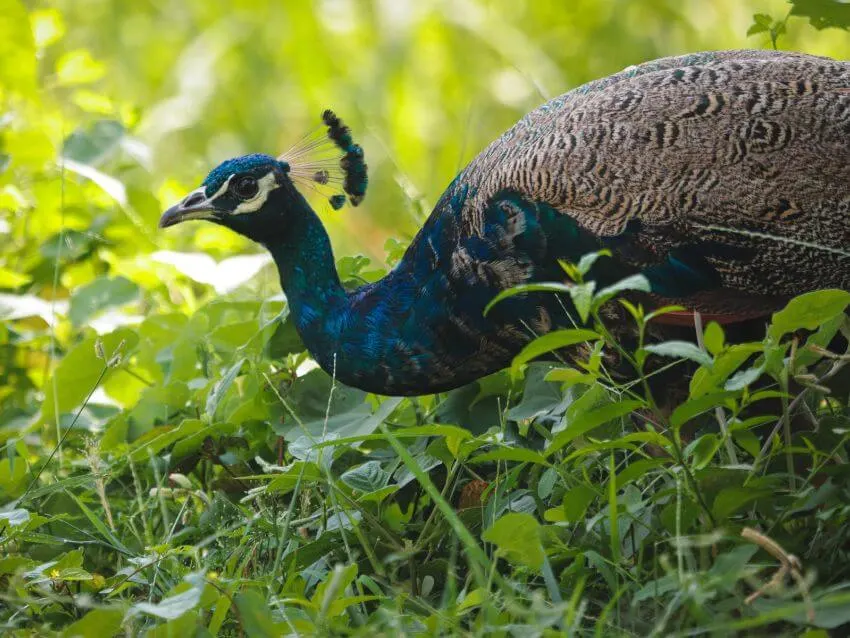
Here is the list of interesting facts about the Congo Peacocks.
- Peafowl is a Congo bird that lives in Congo.
- Congo pea fowl’s diet consists of fruit, seeds, plant parts, and insects.
- Peafowl is monogamous, and the male Congo peacock displays his tail feathers to court and attract females.
- Peafowl is declining fast in Congo due to habitat fragmentation, poaching, and civil unrest.
- Peafowl is attractive to hunters because of its bright blue feathers.
- The Congo Wildlife Conservation project has identified habitat fragmentation, poaching, and civil unrest as major threats to their declining populations.
- peafowl lives in lowland rainforest, and their overall habitat is the Democratic Republic of Congo. Congo peacock is found only in Congo, mainly in its eastern half.
- Baboons are one of the animals that live in Congo and they eat the fruit that
- peafowl eat, Congo peafowl also eats grasshoppers, caterpillars, frogs, lizards, and snails.
- Congo peacock is a mysterious bird and difficult to study due to their remote location and the fact that they are scattered widely in their habitat.
- Their egg clutches are fairly small at two to four eggs per season.
- The birds are monogamous and mate for life and males show their tail feathers to court the females.
- Congo peacock’s most common vocalization is a duet for pair bonding and as a location call.
- Congo peafowl is declining fast in Congo. The Congo Wildlife Conservation project
Conservation Status
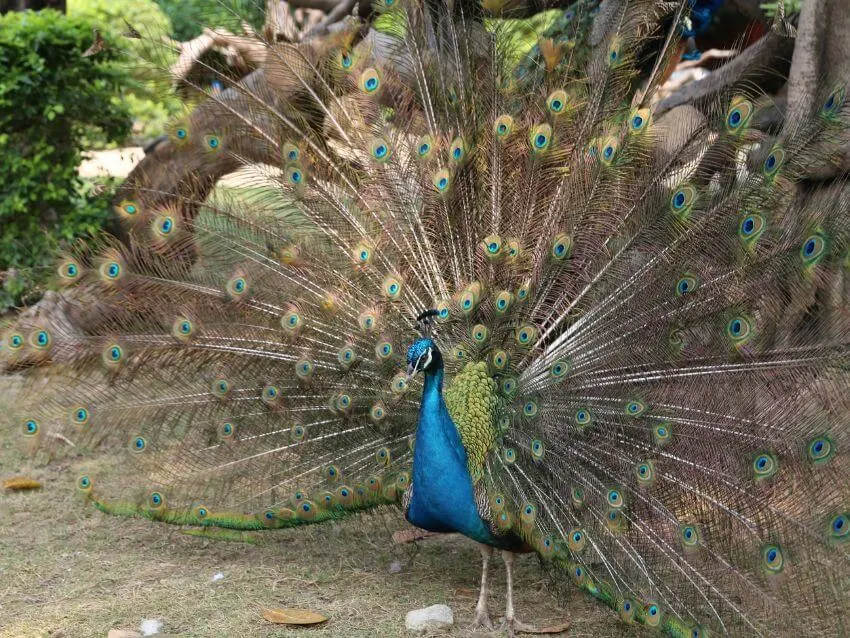
The Congo peafowl is are listed as vulnerable on the IUCN Red List. It is sadly a threatened species.
This means that the Congo Peafowl is likely to become endangered in the near future if the threats to its population continue. The Congo Wildlife Conservation project is working to identify and address these threats to the peafowls population.
Threats
Located in a conflict zone where guerrillas are operating and large numbers of refugees are currently living, the peafowl is currently endangered both by hunting and by habitat loss.
Eggs are taken from the nests for food, and birds are captured using snares. Some are also caught in snares left for other animals such as antelopes and are subsequently eaten. Others are shot for food as well.
Habitat loss comes from several different pressures on the birds’ species’ native environment and habitat. The clearing of forests for subsistence agriculture is one of these threats.
However, mining and logging are also rising hazards. The establishment of mining camps also creates a stronger need for food, leading to more hunting in the area on top of habitat destruction.
Conservation efforts
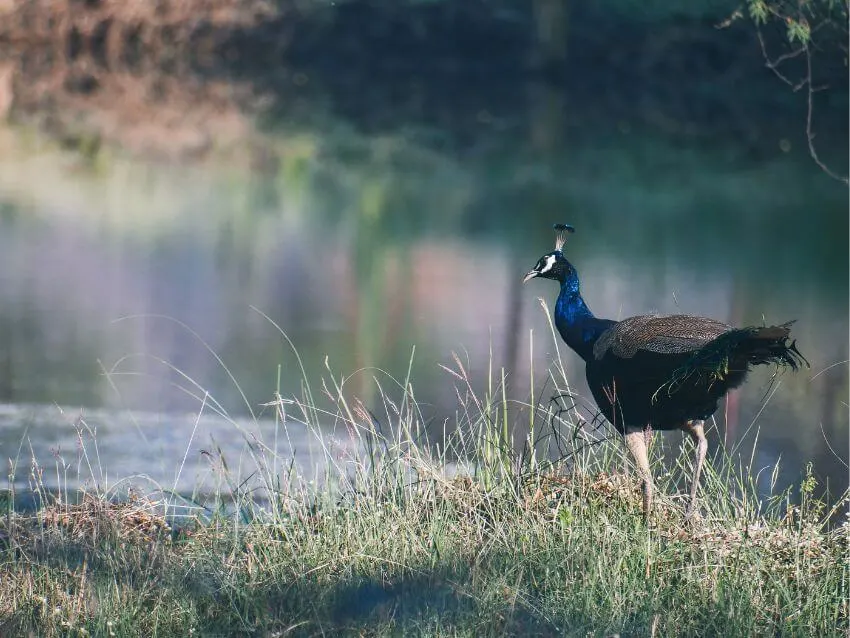
Nature reserves where hunting can be effectively prevented have proven to be the most positive conservation efforts. Conservation areas are being expanded in several important regions, including Okapi Wildlife Reserve and Salonga National Park.
Additional techniques that might bear fruit in the future include researching ways to introduce sustainable local food production to reduce or stop bushmeat hunting, and staff increases at existing reserves to make policing efforts more effective.
Organizations
Call from the Wild
Call from the Wild is an organization started by the Frankfurt Zoological Society which supports a variety of national parks throughout Africa to protect different endangered species including peafowls. Check out these other African environmental NGOs that may be helping the Congo peafowl.
Final Thoughts
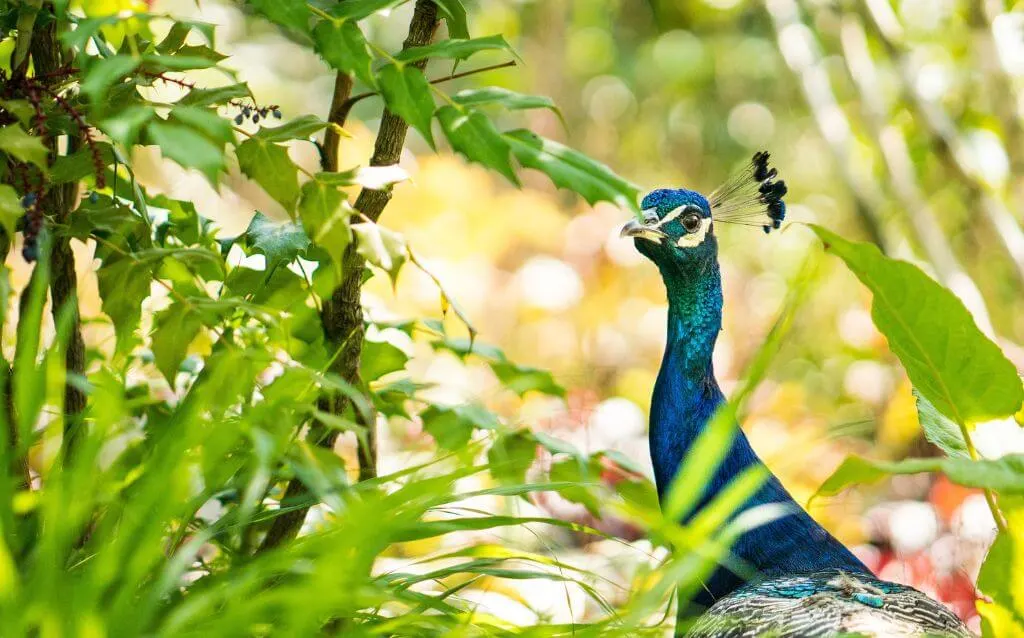
Congo peacock is a mysterious bird and difficult to study due to their remote location and the fact that they are scattered widely in their habitat.
Congo peafowl’s most common vocalization is a duet for pair bonding and as a location call. Peafowl is declining fast in Congo. The Congo Wildlife Conservation project is working to identify and address these threats to the Congo Peafowl population.
FAQ
What is Congo peafowls significance in Congo?
Congo peafowl is Congo’s national bird. peafowls are declining fast in Congo. The Congo Wildlife Conservation project has identified habitat fragmentation, poaching, and civil unrest as major threats to the bird populations.
The Congo Wildlife Conservation Project (CWCP) is working hard to save the species by beginning an intensive program of wildlife monitoring and conservation action with local communities around Duméni National Park where congo peafowls still exist good numbers.
How many Congo Peafowl is still around?
Congo peafowl is estimated to be around 6,000 in Congo.
They are mostly found in Congo’s central forests, one of Congo’s most bio-diverse regions. The Congo Wildlife Conservation Project is working to increase their numbers by breeding them without the blue feathers.
Is Congo Peafowl a bird or a type of chicken?
The bird species is not a type of chicken. Congo Pea Fowl is the national bird of Congo or Congo-Kinshasa.
Congo Peafowl is a close relative to the Indian Peafowl and Australian Congo Pea Fowl. It has an amazing display of shimmering blue feathers with a scalloped edge of black which makes them one of the most colorful birds in the world.
It lives mostly in Congo or Congo-Kinshasa where peafowls are severely threatened by habitat fragmentation, poaching, and civil unrest. It is listed as near threatened on the IUCN red list of animals.
Is Congo Peafowl endangered?
Yes, Congo Peafowl is declining fast.
The Congo Wildlife Conservation project has identified habitat destruction, poaching, and civil unrest as major threats to teh bird’s populations. Congo peacocks have bright blue feathers with contrasting black wings, making them very attractive to hunters.
How long do Congo peacocks live?
Congo Congo Peafowl, Congo’s national bird Congo peacocks, Peafowl Congo Peafowls, Congo African Grey Parrots – Congo African Grey
The lifespans of all different types of parrots are vastly different. The average lifespan of an adult is 25-35 years for this type. As with most animals relative to relative size, they live slightly shorter lives than humans.
What do Congo peafowl eat?
It is an omnivore and thus eats plants, worms, insects, snails.
They usually feed on the ground to keep their feathers free of dirt or other debris. They live in family groups within territories where they establish home ranges.
The species is declining fast in Congo. The Congo Wildlife Conservation project has identified habitat fragmentation, poaching, and civil unrest as major threats to Congo Peafowl populations. The bird species has bright blue feathers with contrasting black wings, making them very attractive to hunters.
